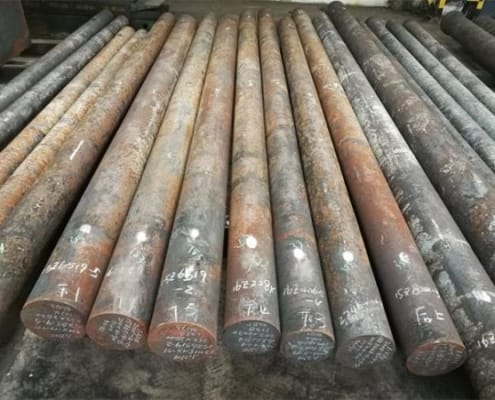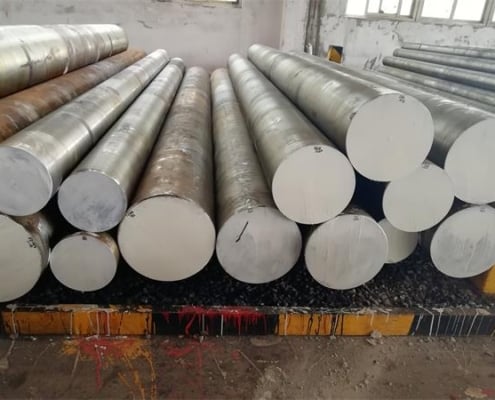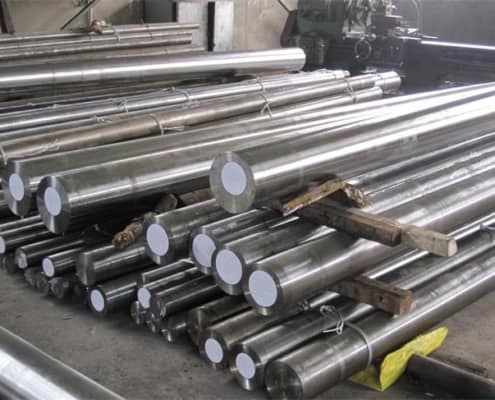Hot Work Tool Steel – The Ultimate FAQ Guide
A lot of people still get confused when they encounter hot work tool steel, they’re not entirely sure what this is! But, when you actually get to know it, the idea is simple – and that’s what this FAQ guide will teach you!
When you finish reading this FAQ guide, you’ll know every bit and turn of what hot work tool steel is!
What is Hot Work Tool Steel?
Hot work tool steels are steels that are made to withstand several conditions, some of which include high heat, high pressure, high abrasion, and the like.
Image of an example of hot work tool steel
They are alloyed tool steels that are used for applications where it needs toe be at elevated temperatures.
Other than the fact that you can use it on higher and elevated temperatures, you can also find use of hot work tool steel in constantly-changing thermic loads at times when the surface of the tool touches the materials being processed!
Where Do You Use Hot Work Tool Steel?
You would want to use hot work tool steels in the forming, cutting, or the bending of both non-ferrous and ferrous metals; and you’d want to choose them where the surface temperature of the workpiece would be above 250 degrees Celsius.
Image of hot work tool steels
Not only that, you could work on a few other types of alloy derivatives using hot work steel in high temperatures, too!
Hot work tool steels are actually flexible and versatile materials.
Hot Work Tool Steel vs. Cold Work Tool Steel
Now that you know what hot work tool steel is, are you aware of what cold work tool steels are?
Image of what a cold work tool steel looks like
Briefly, hot work tool steels are steels that you use to work on projects that require elevated temperatures. So, is cold work tool steel the opposite? – Not quite.
Cold work tool steels are steels you use for applications that only need room temperature. The environment where they’re used is different – but that’s just one of the many differences they have.
Hot work tool steels have carbon levels that range between 0.35% and 0.45%, as well as 6% to 25% other alloying elements like chromium, molybdenum, vanadium, tungsten, and others.
Cold work tool steels, on the other hand, have different series, such as oil-hardening or the O series, air-hardening or the A-series, and the high carbon-chromium or the D series. The contents of carbon and other alloys will depend on the series.
What Are the Main Properties of Hot Work Tool Steel?
The main properties of hot work tool steel include, but are not limited to:
- Toughness
- High Temperature Strength
- Melting Resistance
- Thermal Crack Resistance
Hot work tool steels contain these characteristics, thanks to the composition and the alloying elements that it has.
What Temperatures Can Hot Work Tool Steels Work On?
If you have hot work tool steels, make sure that you work them at temperatures within the 480 to 760 degrees Celsius (900 to 1400 degrees Fahrenheit).
You can use hot work tool steels in blazing hot and highly elevated temperatures
You can also use them for wear resistance, as they’re resistant to wear at around 540 degrees Celsius or 1,000 degrees Fahrenheit.
Are Hot Work Tool Steels Abrasion Resistant?
Yes, hot work tool steels are designed to withstand abrasion and other similar types and kinds of wear.
Due to the alloying elements and other contents they have, you can count on them to be able to withstand abrasion and other types of wear.
Chromium Hot Work Tool Steels vs. Tungsten Hot Work Tool Steels vs. Molybdenum Hot Work Tool Steels
Obviously, the main differences of chromium, tungsten, and molybdenum hot work tool steels would be the content they have.
Although they are all hot work tool steels, they’re different, and we’ll help you understand it with this table:
| AISI | UNS | |||||
| Carbon [C] | Chromium (Cr) | Vanadium (V) | Tungsten (W) | Molybdenum (Mo) | ||
| CR Steels | 0.35% to 0.4% | 3.25% to 5% | 0.4% to 2% | 1.5% to 5% | 1.5% to 2.5% | |
| W Steels | 0.25 to 0.5% | 2 to 12% | 1 | 9% to 18% | 0% | |
| Mo Steels | 0.60% | 4% | 2% | 6% | 5% | |
NOTE: CR steels have 4.25% cobalt in them, and both Tungsten and Molybdenum has 0% of it.
Hot Work Tool Steel is Designated by Which Series?
Hot work stools are easily designated and known as part of group H of steels.
In jargon, businesses and experts in the steels industry know that you use H-series steels for their hardness, strength, and their longer exposure to high and elevated temperatures.
Hot Work Tool Steel Grades
Akin to other types of steels, hot work steels can also be identified and classified in different grades. These grades include, but are not limited to:
AISI System
UNS System
- T20810
- T20811
- T20812
- T20813
- T20814
- T20819
These aren’t the only grades – there are a lot more that you’ll find in the market. In fact, these grade are only for Chromium hot work tool steels, it doesn’t include Tungsten (W) and Molybdenum (Mo) steels.
Where Can You Get High Quality Hot Work Tool Steel Grades?
If you’re shopping around here in China and you’re trying to work with the best and the most recognized hot work tool steel manufacturer, then you should trust us here at Waldun Steel.
Waldun’s hot work tool steels
Our company has been China’s top choice for cold and hot work tool steels! We promote our ability and our capacity to provide both pre-made and custom hot work tool steels.
Packaging of Hot Work Tool Steels
When you decide to order and work with us here at Waldun Steel, we will package all of the hot work tool steels depending on how you want and how you need it!
Whether you need it in crates or in any other material, we will get it for you!
So, what are you waiting for? Give us a call or shoot us an email and we will be right with you! Fill out the form that we have on our website and be given a free quotation of the products and items you need!
Related Hot Work Tool Steels
Page Contents
- What is Hot Work Tool Steel?
- Where Do You Use Hot Work Tool Steel?
- Hot Work Tool Steel vs. Cold Work Tool Steel
- What Are the Main Properties of Hot Work Tool Steel?
- What Temperatures Can Hot Work Tool Steels Work On?
- Are Hot Work Tool Steels Abrasion Resistant?
- Chromium Hot Work Tool Steels vs. Tungsten Hot Work Tool Steels vs. Molybdenum Hot Work Tool Steels
- Hot Work Tool Steel is Designated by Which Series?
- Hot Work Tool Steel Grades
- Where Can You Get High Quality Hot Work Tool Steel Grades?
- Packaging of Hot Work Tool Steels
- Related Hot Work Tool Steels












